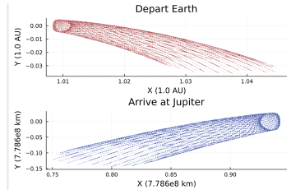Pluto Notebook Competition Winners for JuliaCon2023
|
Place
|
Winner
|
Topic
|
|
First Place |
Renata Castelo Branco |
Designing the Lusail Stadium (Qatar) |
|
Second Place |
Patrick Altmeyer |
Welcome to ConformalPrediction.jl |
|
Third Place |
Eric P. Hanson |
Comparing an Individual Package to the General Registry |
About the Competition
JuliaHub sponsored a Pluto notebook competition this summer at JuliaCon2023 and invited members of the Julia community to enter. The goal of the competition was to highlight the special kind of R&D and technical computing work being done by various members of the Julia open source community. The competition was free to enter and ran from June through August 1, 2023. Competitors were asked to submit their best example of a notebook that solves an interesting problem. The winners received cash prizes plus free compute hours on JuliaHub.com.
The notebooks were judged based on the following 3 categories:
- Does it solve an interesting problem?
- How interactive is it and what kind of output visualization does it include?
- How well does it use Julia Package(s) / JuliaHub?
Competitors were encouraged to submit notebooks that discussed a problem that might affect the real world and how it was solved rather than a purely code-centric instructional notebook.
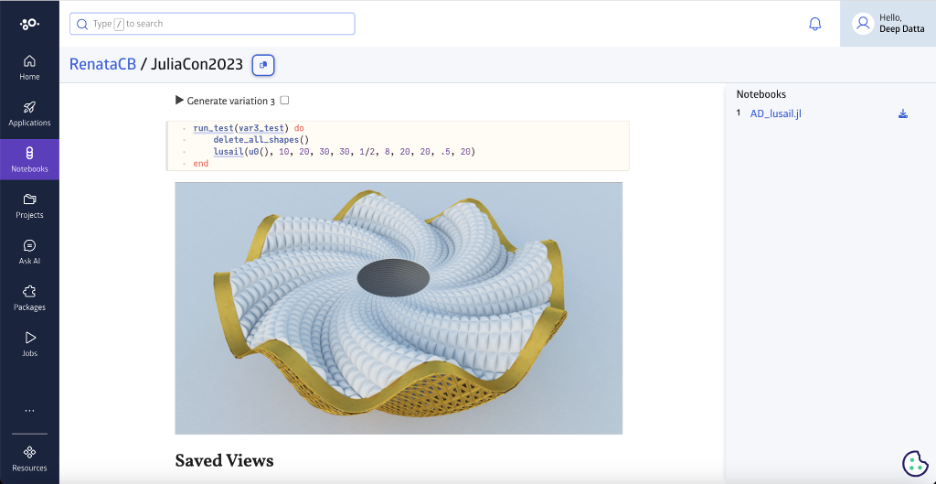
What is Pluto?
Pluto is a reactive notebook that was built specifically for Julia and is one of the world’s most advanced notebooks for research, data science, and of course - running Julia code. What makes Pluto even more intriguing is that it’s being used in advanced computing fields such as mechanical systems design, machine learning, and pharmacometrics research.
What are some features that make working with Pluto especially awesome?
- Instant reactivity means changing cell content automatically updates the output of other cells
- Live docs feature makes it easy to find information you’re looking for
- Uses Julia to easily import packages and has interoperability with other programming languages
- Tons of interactive plotting features, sliders, dropdowns already integrated
- Integrate your Javascript and Web components
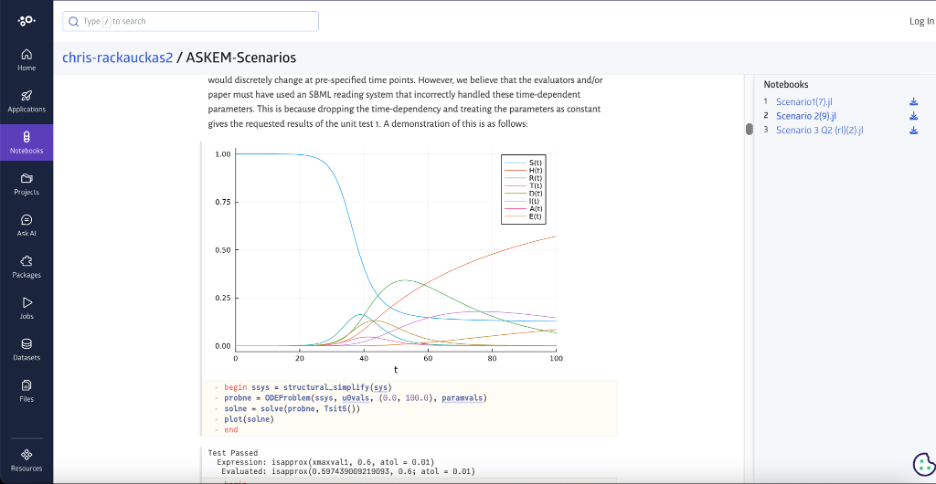
The three winning entries will be featured on JuliaHub where their notebooks can be publicly viewed. The winners in order:
1st Place |
Renata Castelo Branco |
|
Designing the Lusail Stadium (Qatar) The Lusail Stadium is the largest in Qatar and was designed by Foster + Partners for the 2022 FIFA World Cup. In a creative crossing of heritage-based inspirations, which included traditional arabe bowls and vessels, as well as Islamic lanterns, the building takes the shape of a golden cup with triangular perforations on the façade. The matrix of perforations mirrors the inner truss structure supporting the façade and the openings dictate the amount of natural light flowing into the galleries. In order to match the sinuous movement of the cup, the roof structure is shaped like a pringle and is composed of plastic membranes distributed in a radial pattern. Click to View |
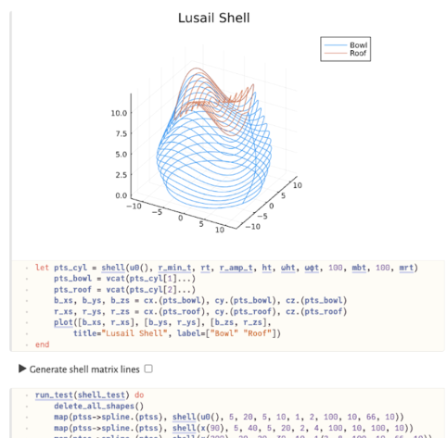
|
2nd Place |
Patrick Altmeyer |
|
Welcome to ConformalPrediction.jl ConformalPrediction.jl is a package for Predictive Uncertainty (PU) quantification through Conformal Prediction (CP) in Julia. It is designed to work with supervised models trained in MLJ.jl. Conformal Prediction is distribution-free, easy-to-understand, easy-to-use and model-agnostic. This notebook provides a very quick tour of the package functionality. Click to View |
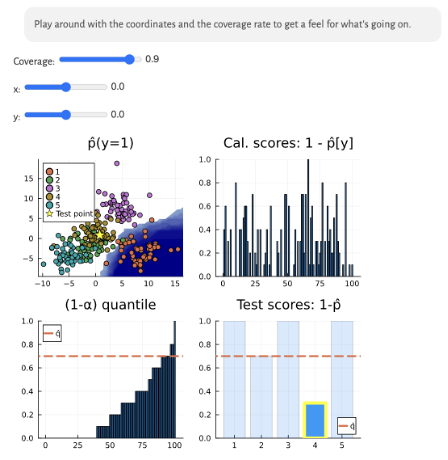
|
3rd Place |
Eric P. Hanson |
|
Comparing an Individual Package Against the General Registry A package developer or user might want to know how the package has changed over time. One could look at plots of package statistics over time, but it can be even more informative to see how a package has evolved in the context of all the other packages in the General registry. Here we present a small tool that allows a user to enter the name of a package and draw the date slider to see some simple statistics about the package (counts of lines of code, divided into several categories) against a backdrop histogram showing the same counts from the latest versions of all packages in General at that date. Click to View |
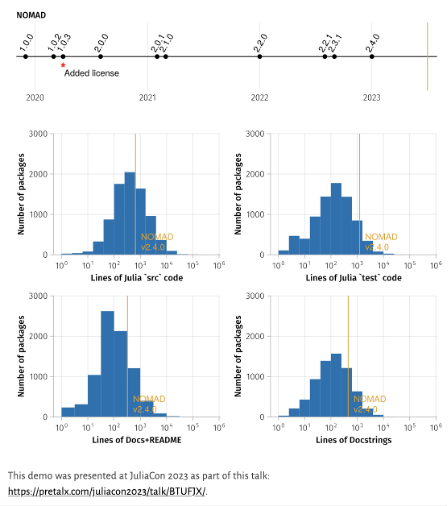
|
Congratulations to all who participated!!
This was JuliaHub’s first year hosting the Pluto competition and we were extremely happy with the quality of submissions. In fact, we’re giving every competition participant $50 worth additional compute on JuliaHub, on top of the free 20 hours anyone who logs into JuliaHub gets per month. To learn more about JuliaHub and Pluto, visit our overview page.
You can also access a few more featured notebooks by first logging into JuliaHub and then clicking on the links below:
Thank you to all the participants of the Pluto Notebooks Competition for JuliaCon 2023!
About the Author
Deep Datta
Access expert content by Deep Datta on JuliaHub. Uncover advanced topics in modeling, AI, and computational science.


